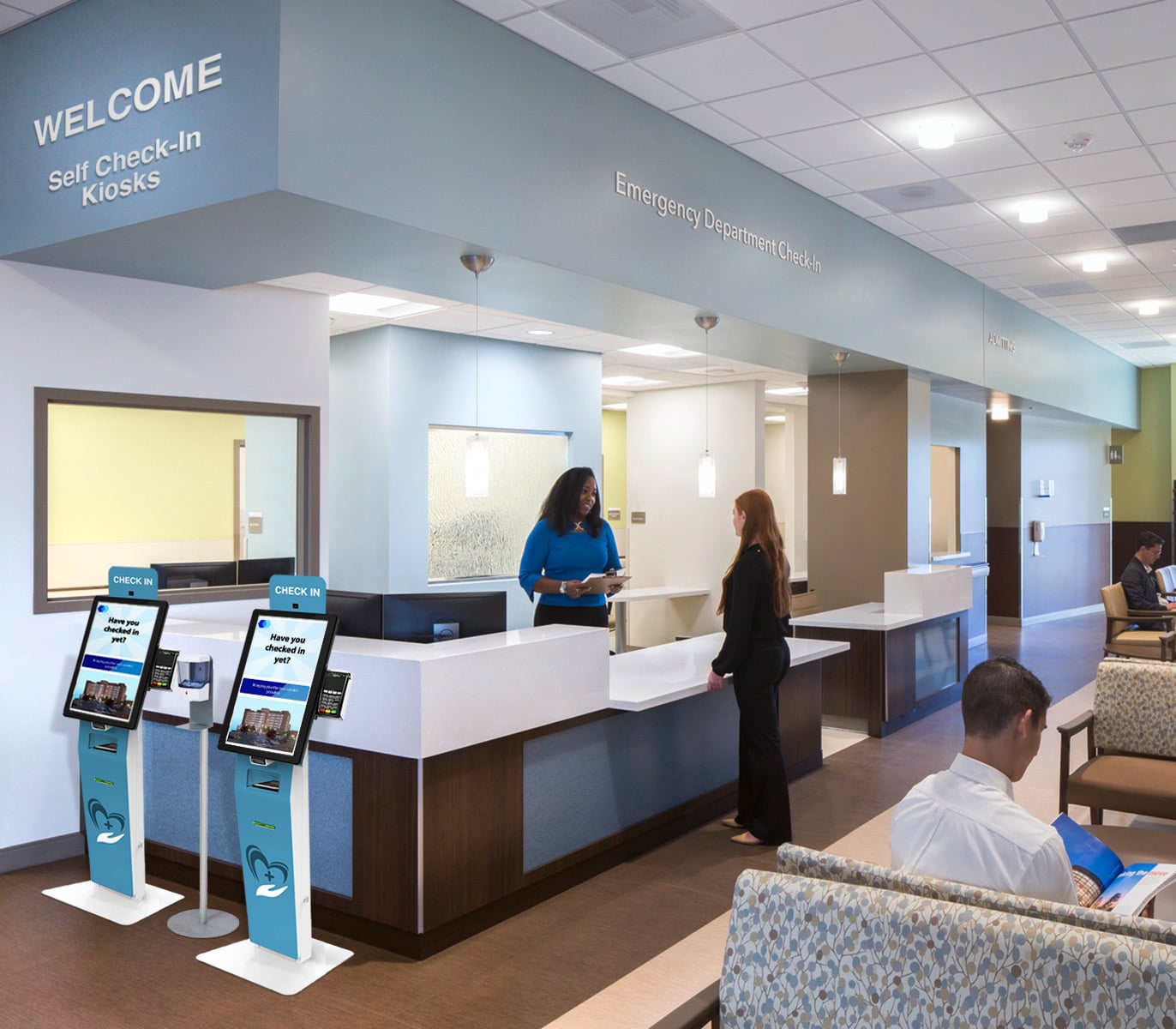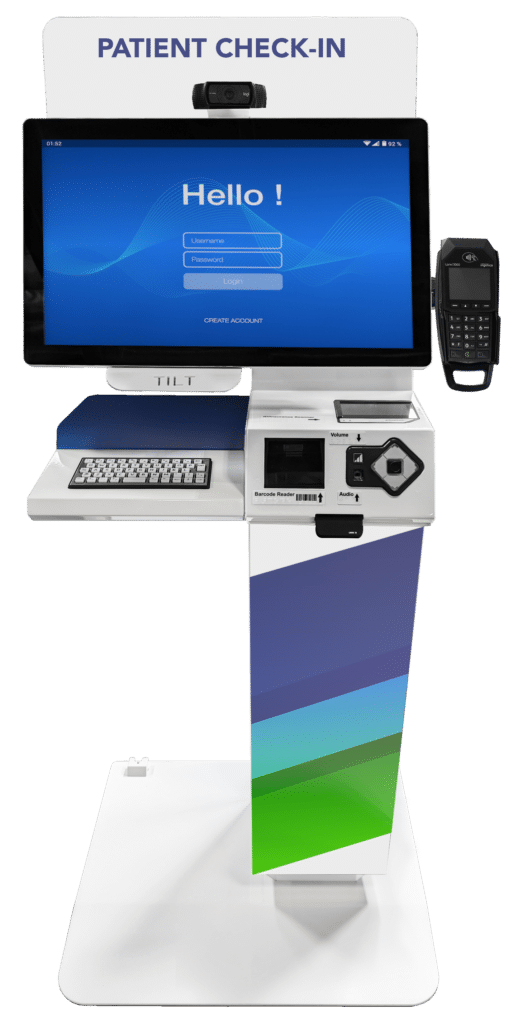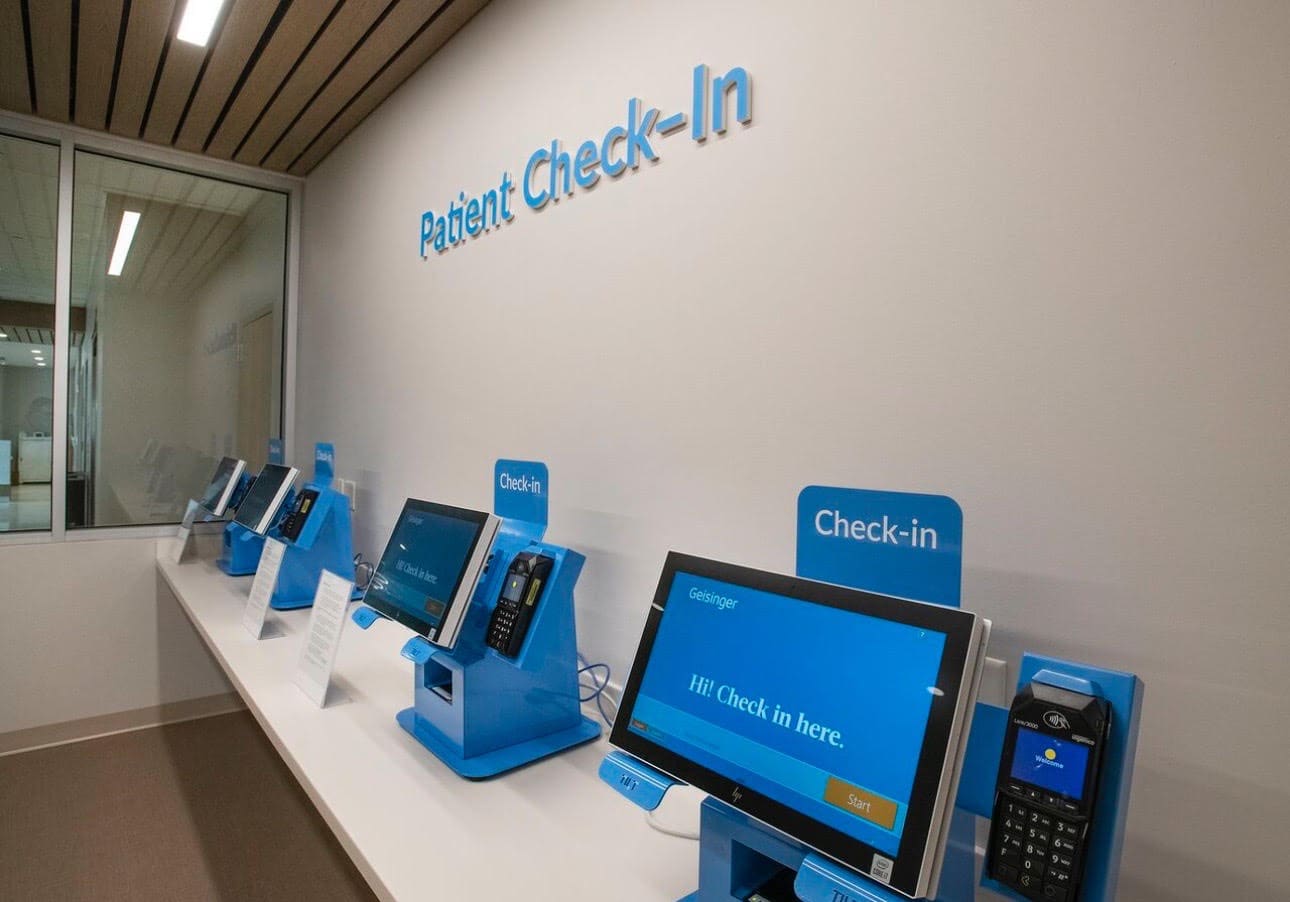Patient check-in technology has become a cornerstone in healthcare delivery. At Olea Kiosks, we have spent more than a decade refining and deploying healthcare check-in solutions, observing what works and what doesn’t. Here’s an in-depth look at three key lessons we’ve learned along the way that ensure successful kiosk implementations—and how they can transform patient interactions for the better.
1. Accommodation is Key: Ensuring Inclusivity and Usability
A kiosk that isn’t as helpful and inviting as a human assistant is destined to fall short. Accessibility and accommodation should never be afterthoughts—they are fundamental to creating a positive user experience.
Our patient check-in kiosks are designed to be front and center, with features that make it clear they are there to serve everyone. For instance, we’ve implemented technology that allows the kiosk to mechanically raise or lower to meet the needs of each patient, whether they are in a wheelchair or stand 6’10” tall. This visible adaptability sends a powerful message: “We care about you.”
Beyond physical adjustments, a well-designed kiosk should guide users intuitively through the check-in process. From clear on-screen instructions to responsive touch interfaces, every detail matters in making the experience seamless and inviting. When patients feel that the kiosk “cares,” it fosters trust and ensures consistent use.
2. Front Desk Buy-In: Empowering Staff, Not Replacing Them

One of the most significant misconceptions about patient check-in technology is that they aim to replace human staff. The reality couldn’t be more different. The best kiosk deployments amplify the abilities of front desk staff, turning them into “Superhumans” capable of managing multiple tasks efficiently.
A core strategy we employ is the “One to Many” approach. This model transforms front desk personnel into “Kiosk Ambassadors” who oversee and assist patients checking in at multiple kiosks simultaneously.
Similar to the efficiencies seen in airport self-check-in areas, this approach increases kiosk usage and improves overall customer experiences.
However, achieving this synergy requires early and ongoing buy-in from the front desk team. Staff need to see the kiosk as a tool that lightens their workload and enhances their ability to serve—not as a threat to their roles. Proper training and clear communication about the kiosk’s purpose are crucial to cultivating this mindset.
3. Workflow and Equipment: Get It Right from the Start
Even the most sophisticated kiosk can’t succeed without a well-thought-out workflow and the right supporting equipment. Imagine a patient trying to check in, only to find that the software doesn’t support their specific type of appointment. Or a patient attempting to scan their ID, but the device requires them to hold it at an awkward angle in front of a webcam. Frustrations like these can deter patients from using the kiosk altogether.
Effective workflow design involves mapping out every step of the patient journey, from initial interaction to completed check-in. It’s about eliminating friction points and ensuring that the process feels intuitive. Equally important is choosing high-quality equipment tailored to the healthcare environment. For example, reliable ID scanners, touchscreens that respond accurately, and robust software integrations are all non-negotiable.
Regular testing and updates are also part of maintaining a smooth workflow. As healthcare needs and technologies evolve, kiosks must adapt to stay relevant and functional. An adaptable system ensures that patients consistently have a positive experience and trust the technology to meet their needs.
Real-World Benefits: Saving Money and Enhancing Experiences
When these lessons are applied effectively, the benefits extend far beyond the check-in process. Organizations that prioritize accommodation, staff empowerment, and optimized workflows see significant cost savings. Automating routine tasks allows healthcare providers to allocate resources more effectively, ultimately reducing overhead.
Patients also reap the rewards. A well-implemented kiosk system enables them to manage their experiences on their terms. Whether they prefer the autonomy of self-service or appreciate the option of human assistance, the choice is theirs. This flexibility leads to happier, more satisfied patients who feel valued and respected.

Finally, front desk staff become true superheroes. Freed from repetitive administrative tasks, they can focus on delivering personalized care and addressing more complex patient needs. The result is a more harmonious, efficient, and enjoyable healthcare environment for everyone.
Looking Ahead: Continuous Improvement
As we look to the future, the role of patient check-in technology will only continue to grow. The lessons we’ve learned over the past decade serve as a foundation for ongoing innovation. By staying committed to inclusivity, staff collaboration, and operational excellence, we can ensure that kiosks remain a vital tool in improving healthcare experiences. At Olea Kiosks, we are proud to contribute to this evolution, one deployment at a time. By focusing on what truly matters—serving patients and supporting staff—we’re building a future where patient check-in technology enhances human connection, not replaces it.


